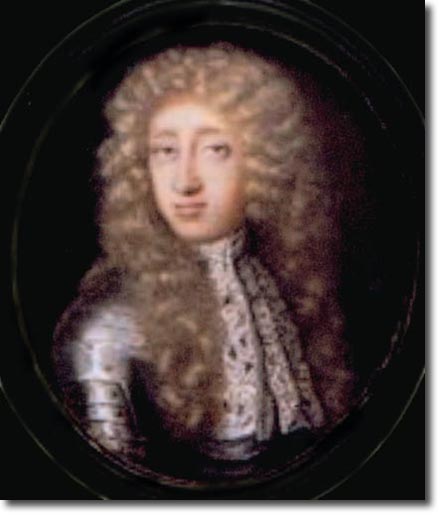|
|

 |
|
The famous 'Salmander' Cutts of Namur. In 1695 when the Dutch and British force under William III besieged the fortress of Namur. Cutts commanded two Guards brigades and showed such bravery and coolness under fire that he earned the nickname 'Salamander' after the mythical dragon supposed to live in fire.
John Cutts was born in Essex in 1661 and although he followed a military career he was a keen poet. His first appearance in print was in 1685, 'La Muse de Cavalier; or an Apology for such Gentlemen as make Poetry their Diversion not their Business'. He volunteered to serve under Charles Duke of Lorraine against the Turks in 1686. General Hugh Mackay described him as 'Pretty tall, lusty and well shaped, an agreeable companion, with abundance of wit, affable and familiar, but too much seized with vanity and self-conceit.' He was in favour with William of Orange and served in Ireland, being present at the Battle of the Boyne and siege of Limerick where he was wounded. In 1691 he succeeded to the command of the Prince of Hesse-Darmstadt's brigade in Ireland and in 1694 was a brigadier in the disastrous Brest expedition. The following year he went to Flanders where he achieved fame at Namur. In 1702 he was promoted to major-general and lieutenant-general the next year. In the War of the Spanish Succession he again showed great courage at the capture of Fort St Michael. He was third in command at Blenheim. He had been married twice for brief periods but his wives, both called Elizabeth, died. Lord Cutts died in Dublin on 26th Jan 1707. |
Armed Forces | Art and Culture | Articles | Biographies | Colonies | Discussion | Glossary | Home | Library | Links | Map Room | Sources and Media | Science and Technology | Search | Student Zone | Timelines | TV & Film | Wargames